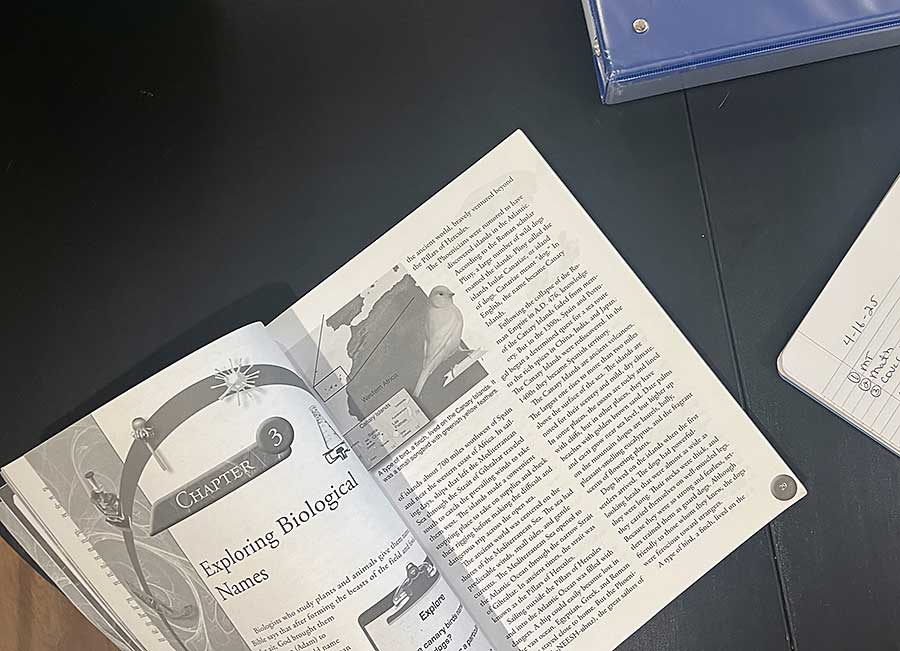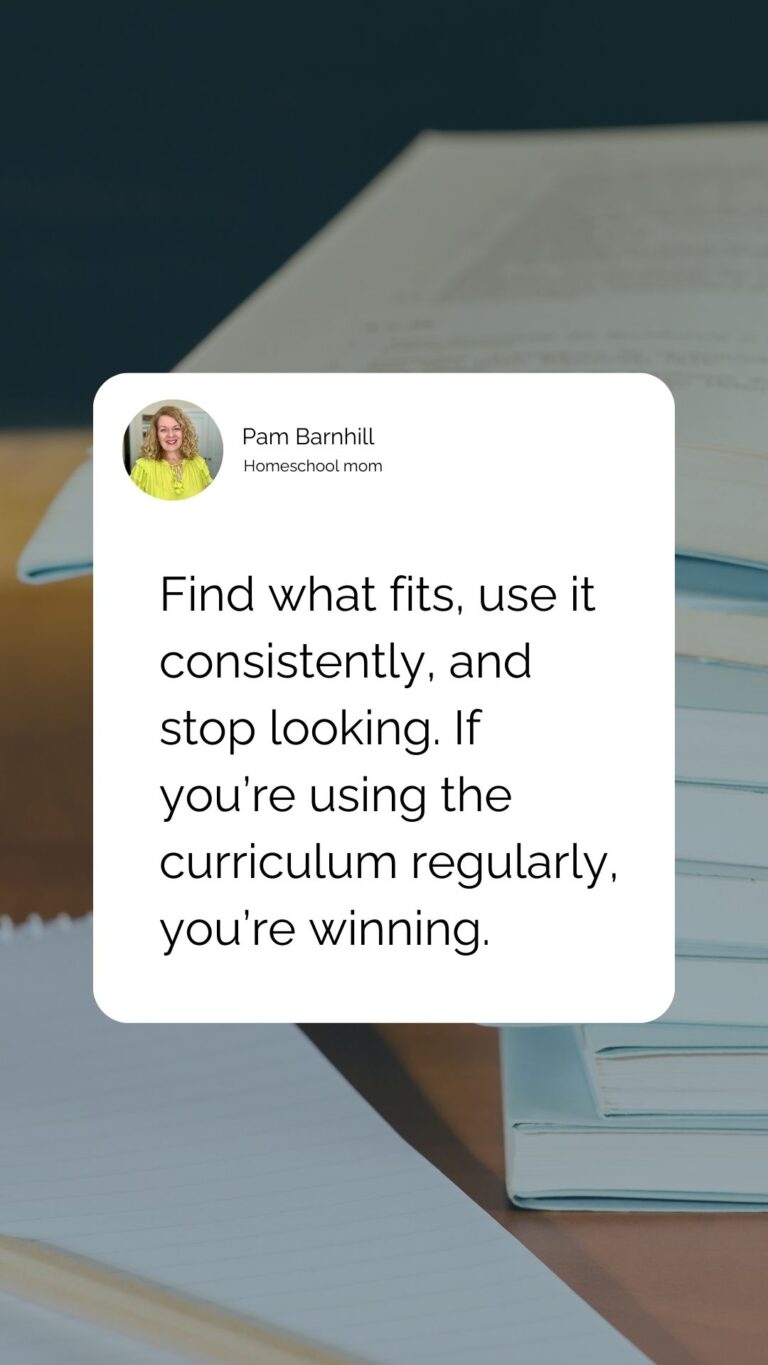
It’s curriculum season, and you know what that means: a flood of shiny programs, glowing reviews, and unboxing videos that make everything look like the answer to your homeschool stress. But here’s my honest take—it only counts if it works for your real-life family, not just the influencer on YouTube.
Today, I’m flying solo to give you my six best questions to ask yourself BEFORE you hit “add to cart” on that next curriculum (plus a bonus one at the end). This is all about helping you dodge curriculum regret, stop chasing endless FOMO, and make wise, confident choices—even when everything looks “perfect” out there.
Whether you’re new to homeschooling or a seasoned vet with a closet full of half-used programs, you’ll find practical strategies, real talk, and permission to pivot without guilt. I’ll share my own wins (hello, DIY Shakespeare lessons) and fails (science experiments we never actually did) so you can learn from my messy middle.
Links and Resources From Today’s Show
- The Lively Art of Writing (classic writing instruction)
- All About Reading / All About Spelling (for phonics and hand-holding)
- Language Arts Together plans
- Mr. D Math
- Teens on Track
- Our free homeschool community (join and ask your questions!)
What You’ll Learn About Choosing Curriculum
- Are you making your curriculum choice based on your season of life—or wishful thinking?
- How to ditch the comparison spiral and stop second-guessing yourself
- The ONE thing every curriculum that “works” has in common (spoiler: it isn’t expensive flashcards or pretty boxes)
- Concrete examples to help you decide if you need hand-holding—or can wing it like a pro
- Why you don’t NEED to die on every homeschool hill (goodbye, busywork battles!)
- Sneaky ways life seasons—from new babies to job changes—should guide your curriculum decisions
Say Goodbye to Curriculum Regret
Let’s be honest: Nothing tempts a homeschool mom like a shiny new curriculum. The Instagram photos! The unboxing videos! The promises of happy, independent children who never whine about math!
But then there’s the reality: a closet full of half-used programs, your wallet a little lighter, and the creeping dread of curriculum regret. (Been there. More than once.)
So how do you cut through the noise and pick something you’ll actually use? (And not just admire while it collects dust?) Here are the six questions I ask myself—and walk moms through all the time—before buying any new homeschool curriculum.
1. Do I Have More Time or More Money This Year?
Homeschooling is a choose-your-own-adventure between time and money. Are you willing to DIY amazing things from Pinterest, dig for freebies, and cobble together plans from a hundred sources? Great—if you’ve got the time. (Bonus tip: AI tools have made this less painful, but you’ll still do some sifting!)
Or maybe you’re working from home, juggling toddlers, or just need something you can open and go. If so, paying a little more for a ready-made curriculum is WORTH IT. It’s not about being fancy—it’s about surviving (and maybe even enjoying) your days.
“Check your pocketbook, check your calendar. That’s the way you make the decision.”
2. How Much Hand-Holding Do I Need?
TBH, some subjects are in my wheelhouse—writing? I can wing it with a dog-eared book and a legal pad. Phonics? Not so much. I needed every ounce of support (shout-out to All About Reading!) because, despite being “good at reading,” I was lost on the rules.
If you’re unsure, absolutely pay for the script, the videos, the step-by-step. Confidence is priceless (and you can always back off the hand-holding when you’re ready).
3. How Much Teacher Involvement Is Actually Required?
Nothing derails a routine like picking something that requires you to “Mom-at-elbow” every.single.day—for every child, every subject. Ask yourself: Are you okay doing that? Or do you need to be able to walk away while someone watches a math video or knocks out a worksheet?

And let’s be brutally honest: If you loathe glitter or complicated science experiments, don’t set yourself up for misery. You don’t have to be Ms. Frizzle to be a good homeschool mom.
4. Does This Curriculum Require a Lot of What My Kid Hates?
There are hills to die on (reading, writing, math—sorry, kids, you’re doing these no matter what). And there are hills you just…walk around. If lapbooks, coloring pages, or videos turn your child into a puddle of resistance, save everyone’s sanity and move on.
We’re not here for daily drama over notebooking pages. Life’s too short.
5. How Does the Curriculum Developer Support Me?
Some companies are absolute rock stars about helping you—think placement tests, teacher training, “try it for 60 days and return it if it’s not working” policies, and live homework help lines. (Hello, Mr. D Math and All About Reading.)

Find programs that want your family to succeed—and make sure there’s a community or at least decent email support when you get stuck.
6. Will This Curriculum Fit My Actual Season of Life?
Seasons change. The year you’re pregnant = definitely not the year for project-a-day, 42-step arts and crafts. Have a new baby? Two jobs? Homeschool in the middle of a move? There’s no “gold star” for sticking with something impossible.
Give yourself permission to downshift—simple, flexible programs are your best friend in chaos mode.
A quick reality check: Even your most beloved curriculum isn’t a lifetime contract. It’s okay to set it aside for a while, pick it up with the next child, or move on without guilt. Consistency matters more than perfection.
“The best curriculum is the one that actually gets done.”
Key Takeaways:
- Decide based on your real life, not wishful thinking or internet pressure.
- Pay for the hand-holding you NEED, not what you think you “should” be able to do.
- If it requires a daily fight, it’s not worth it (unless it’s reading, writing, or math).
- Look for generous developers—returns, support, and all.
- Curriculum should fit your season. Pivot boldly.
Next Steps:
- Listen to the full episode for lots of real-life stories.
- Download the Homeschool Curriculum Quick Guide to walk yourself through these questions again
- If you’re really in a rut, join our free community and get encouragement from moms who “get it.”
- Check out Put Your Homeschool Year on Autopilot if you want a flexible, reusable planning tool.
- Forward this post to a friend who needs a little encouragement!
And remember: You can’t mess this up. Find what fits, use it, and stop looking (for now). You’re already winning.
Leave a Rating or Review
Doing so helps me get the word out about the podcast. iTunes bases their search results on positive ratings, so it really is a blessing — and it’s easy!
- Click on this link to go to the podcast main page.
- Click on Listen on Apple Podcasts under the podcast name.
- Once your iTunes has launched and you are on the podcast page, click on Ratings and Review under the podcast name. There you can leave either or both!
- Homeschooling Through The Hardest Year Ever - July 1, 2025
- Juggling Big Life Changes and Homeschool - June 17, 2025
- Which Homeschool Schedule Actually Works for You? - June 3, 2025
